How to Setup Your Outdoor Retail Stores for Success through "Google My Business"
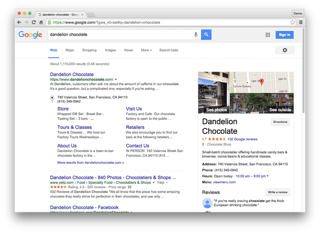
I was recently heading up to raft the Snake River through Hells Canyon in Idaho. As we were driving, we decided to go through our checklist again. In doing so, I realized I had forgotten an item we needed.
Once we hit a stretch of highway where I had service, I got onto to my smartphone and started searching for the product options that we needed. After checking out several manufacturer options, I then began the search for where I could find the product in a local store on the way up North. Now I used my "voice search" to locate a local retailer. I started on the web and ended up in a brick and mortar store for this purchase.
It’s critical to optimize your business for voice search starting now, or you could lose the vast majority of consumers who choose to shop through voice-activated devices.
Since voice search is 3x more likely to be local, it’s also important to ensure your business listing is updated on Google to reach those local searchers (with accurate hours, an up-to-date address, photos and reviews, etc.).
This is what your audience is doing to find your stores in the real world. If you're not helping these people find your stores, you're losing.
Getting Your Dealers Found On Google Search and Maps
You're busy with new product development, product marketing, manufacturing execution and tons of other details. Although it's not your job to make sure that your dealers are being found in local search results as part of your sales enablement strategy, it is important that they are being found if you are going to have a shot at a potential customer finding your product and purchasing it. Local dealers, retail shops, outfitters, and other physical stores need to complete a plethora of tasks to ensure they are being found. But how do you get found? And, why is this so important?
- Research shows that 97% of consumers search the web to find local goods and services, but only 37% of businesses have claimed a local business listing on a search engine
- Check this insightful research from Contevo — a whopping 65% of consumers begin their journey to purchase on a smartphone
- A massive 72% of online shoppers consider in-store experience as the most important channel when making a purchase
- Over 52% of shoppers say convenience is the main factor they consider before making a purchase
Your dealers can set up a business account on Google to get found online. Let's walk through how your dealers can:
- Set up a business account
- Manage their local presence
- Verify ownership
Google My Business
When your dealers create a Google My Business profile, it’s easier for potential customers to find information about that business. It's where a business lists their hours, contact information, directions, and pictures.
Google My Business is completely free to them. No catch.
Here's an example, you see how business information is prominently featured on Google’s search results page.
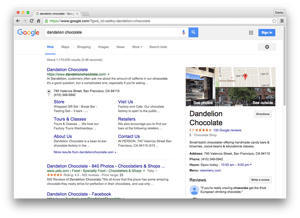
By using this tool, your dealers can help Google understand information about their business, and potentially display it to searchers.
Please note that setting up Google My Business won’t guarantee that their business will appear in Google’s search results, but it will help Google show it consistently across Search and Maps. Google My Business doesn’t replace your dealer's business website; it complements it by giving their business a public identity and presence on Google.
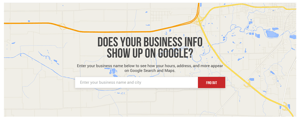
Step 1 - Search for your Business
Your dealer can type in the name of their business and click "Find Out" to see if their business appears on Google Search and Maps. If they previously used Google Places for Business or Google+ Pages to manage their business information on their account was automatically upgraded to Google My Business.
To access Google My Business from the diagnostic tool, click the “Update Your Business Info” button. When a dealer clicks on this, it triggers a diagnostic tool that will tell them whether or not their business can be found on Google. There are three possible outcomes.
a) "Nice Job. You're on the Map"
This means the business is verified, that is, the business owner— or someone authorized to manage the business— can sign in and make updates that can appear on Search and Maps. They can see suggestions for keeping the business information accurate and up-to-date, plus a preview of the listing as it could appear on Google. If sections are missing information they are highlighted for their attention.
b) “Your Business Info Might be Incorrect on Google”
This means your business information may appear on Google, but the location is unconfirmed and the listing hasn’t been claimed or verified. (More on that below). If this is your business, you can verify it to confirm the location by clicking the button labeled “Verify Your Business Info.”This starts the verification process.
c) “Your business isn’t on the map”
The diagnostic tool can’t find any information about their business. They need too click, "Add Your Business Info" to create a listing.
They will need to sign in to Google My Business with their Google username and password associated with the listing. However, if they don't have a Google account they will need to create one. This provides a single login and access to all the connected Google products. For example, if they log in to Gmail (which is automatically a Google account), they do not need to log in again to access their calendar or docs - they are all connected. If they don’t use Gmail, they can register another email address as a Google account.
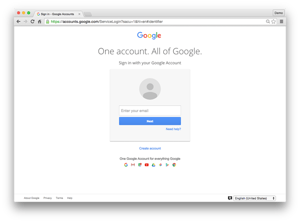
Step 2 - Add or Select a Business
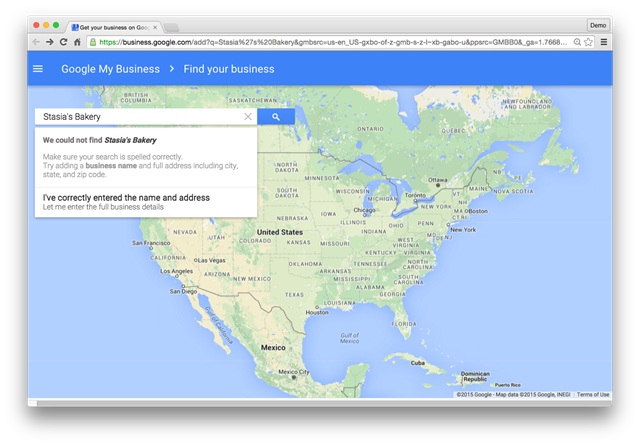
Your dealer now looks for their business in the list of results. If they see their business, they click the corresponding arrow. That will actually skip them ahead to Step #4. If their business does NOT appear in this list, they click the last option, labeled “Let me enter the full business details.” That takes them to Step #3.
Step 3 - Enter Your Business Details
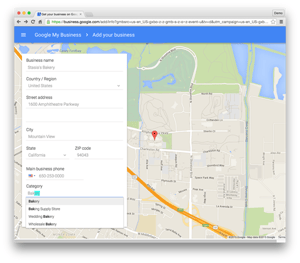
If they clicked “Let me enter the full business details” they will see this page that asks them to enter their business information. They need to be careful to enter the information correctly, paying attention to capitalization and spelling. This is how their information may appear across Google. When they enter their address, they should follow these guidelines when entering your address:
- Enter the complete and exact street address for their location. For example: "1600 Amphitheatre Parkway, Mountain View, CA, 94043”.
- PO Boxes are not allowed.
- They can only include information that is part of their official address. They cannot include extra information like cross-streets or nearby landmarks.
- Suite or office numbers may be added separately from their street name and number.
- They need to make sure they include a city, state, zip, and country in their address.
In some cases, their business cannot be located – for example, PO Boxes or streets so new that they aren’t listed on the Maps. If they have problems they can always contact Google by visiting support.google.com/business and clicking “Contact Us” at the top. From here they can call Google or use the Live Chat option to get assistance with their listing. They will also be asked to select a category for their business. It must be an existing category - they can’t create one. If they can’t find the perfect category, don’t let that stop them from making a listing. They should choose something close.
For example, let’s imagine they are a LEED certified construction company. Thet would look for a category by typing characters in and seeing what categories pop up in the list below. They might start by searching for LEED or “green construction” – but those categories don’t exist. The closest fit might be the generic “Construction Company” category. That’s OK – they can use the business description to provide important details about their business.
Step 4 - Confirm a Business
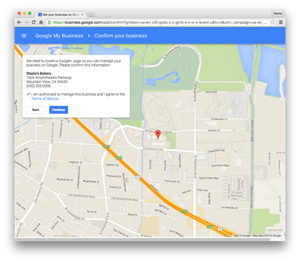
Now they review the information carefully. Make any corrections and if everything looks good, they check the box to indicate that they are the authorized person to manage the business information and agree to Google's Terms of Service, then click "Continue."
Step 5 - Verifying Your Business
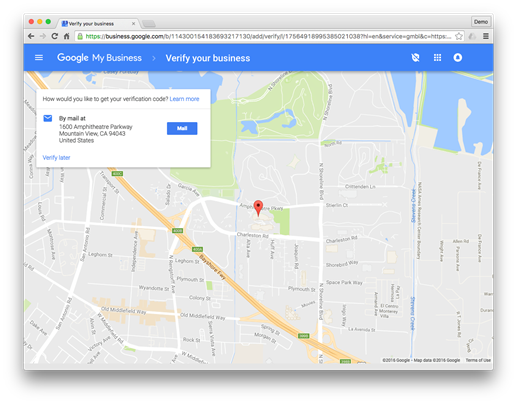
Google wouldn’t let just anyone manage your dealers business info, so to make sure the basic information they submit is accurate, Google asks to verify that they are the owner. Most business owners verify by postcard. If they are verifying a business that’s already on Google, they may also be able to verify by phone. If they have verified their business’s website with Webmaster Tools (Google Search Console), they may also be eligible for instant verification. Make sure they signed in to Google My Business with the same account they used to verify their site with Webmaster Tools. For mail and phone verification, Google sends businesses a unique 5-6 digit verification code. They will use that code to confirm their affiliation with the business. Each verification code is unique to the account and the particular listing for which they have requested verification. Remind them to please not share this verification code with anyone else. If they want the option to verify their business by phone, they need to:
- Make sure they can directly answer the business phone number to receive the verification code. If they have a voicemail system, switchboard, or call center this method will not work.
- Click Verify by phone to have the code sent to their phone automatically via automated message.
- Enter the code from the message into their dashboard.
Please note: Google will never call their business and ask for their code, password, or any personal info. If they do not see the phone or Webmaster Tools verification options, they should click the arrow next to “Mail me my code.”
Step 6 - Request a Pin to Send to Your Business

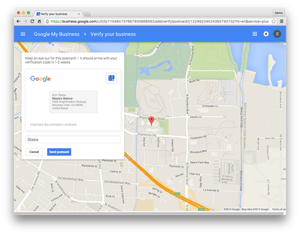

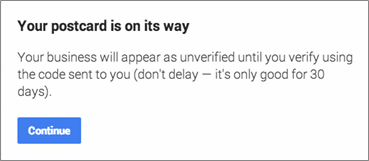
On the postcard request screen, make sure their address is displayed accurately. They can also add an optional contact name to help the postcard reach them. Then have them click ”Send a postcard.” It will take about 1 – 2 weeks for their postcard to arrive. Once they recieve the postcard, they'll input a PIN number that Google created. Once they input that PIN, your business will be listed.
Want to Help Your Dealers Get Found Locally In Searches?
As part of your sales enablement strategy, here are some additional ideas and resources you can share with your dealers to ensure they are being found locally.
Local Search Engine Optimization is focused on providing results that are relevant to a searcher based on their current location. Although it is very similar to organic SEO, it has its differences and is a way for searchers to find you via Google search.

There are many different strategize off-site that go into this process, including creating Google My Business accounts and other local directory profiles, but many people overlook the most important starting point…the website optimization! Let's examine how to optimize your website for local search results.
Keyword Strategy
The most important part of any successful SEO efforts is the keyword strategy. When it comes to organic keyword research, you are coming up with target industry-specific keywords. Now, take those keywords and research locations added to see what the search volume may be. This can help you decipher what location specific keywords are going to best for your company. When it comes to keyword research, I would definitely suggest using HubSpot’s Keyword Tool, or if you do not have that software, Google AdWords works just as well.
Titles and Meta Descriptions
When it comes to the search engine results, people are going to see your website’s SEO title tag Meta description first. Additionally, if you have the title and description locally optimized when someone searches for a keyword with their specific location in the query, the location will be shown in bold along with the keywords for the search. For proper optimization, you must make sure the title tags and descriptions are created with local search in mind.

The Meta title is one of the most important elements for on-site optimization ranking factors. Sometimes Google may choose an alternative title for one reason or another, but regardless it is important that you assume that Google will choose your specific title tag. When created your local optimized title tag, make sure to include your primary keyword and location all within 60 characters or less.
The Meta description is most important when it comes to user click through rate. You want to ensure you make it enticing so that the user will want to go to your website. Just as the title, Google may choose a snippet from your website, but you still need to create a locally optimize description. It is great to describe your business, where it is, and possibly your phone number for click to call within the search results.
Address & Phone Number on all pages
Name, address, and phone number is extremely important to have on every single page on the site. The best place to put this would be in the footer because it will not take up space within the content. You need to make sure your business' contact information is text (not an image) to make sure Google can crawl it and understand the location.
Embed a Map
It is important to have an embedded map onto the contact page on the website. To do this, go to Google Maps, enter your address, and grab the embed code:
- Click Menu

- Click Share or embed map

- Copy the highlighted link and paste it in the code of where you want it on your contact page. A preview of what it will look like will be below.
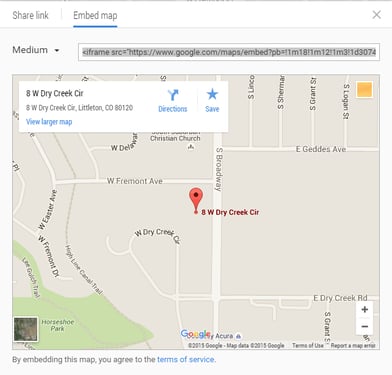
This map is a wonderful way to help visitors find the location easily, it could also tell Google a little more about your location.
Conclusion
As a local business, you want to make sure you are being found in local search results. Research into local searches shows that half of mobile visitors to visit a store within one day, so ranking well for local search has a direct impact on in-store traffic. And with more people in your stores or in your dealer's stores, the more opportunities you have for increased sales.
Even more, consumers trust online reviews as much as personal recommendations. Positive online reviews can help you sell products, or it can inspire trust from a customer sharing their positive experience they had at your store. It's no surprise that consumers and businesses are turning to Google to get recommendations and referrals.
Your dealers are all based in some local search area. It is important that their business is being optimized for local search. Optimizing for organic search is obviously extremely important, but it is great to have that additional way for others to find their website and locate your products they carry. To maximize the partnership you have with local brick and mortar retailers, it is critical that they are set up in Google to be found.


